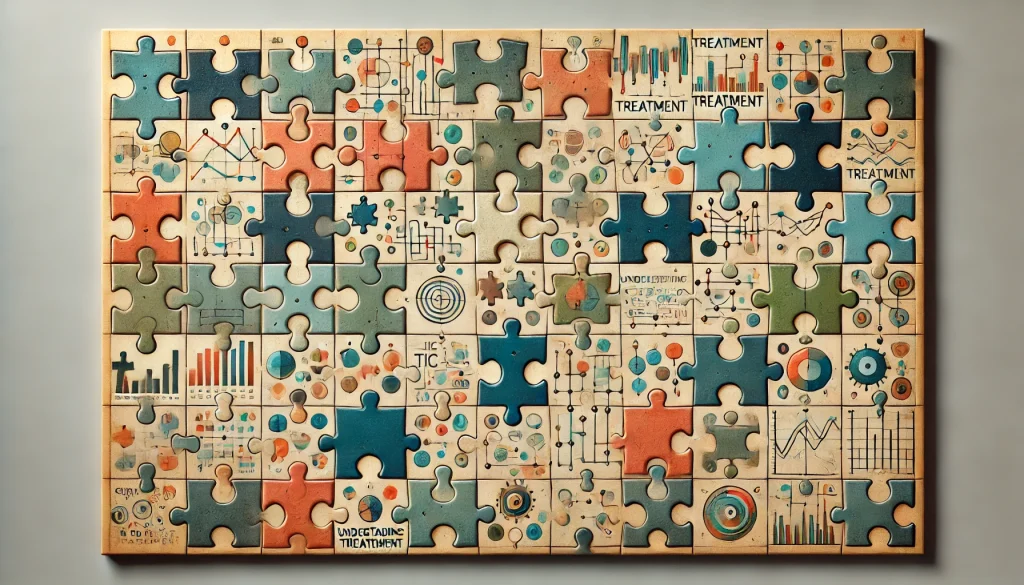Buckle up, folks! Today, we’re diving into the wild world of tic disorder treatments and exposing the missing pieces of the puzzle.
The Study That Got Us Thinking
A recent study focused on three main approaches to treating tics and Tourette’s:
- CBIT (Cognitive Behavioral Intervention for Tics)
- Deep Brain Stimulation (DBS)
- Neuromodulation
CBIT is like teaching your body new tricks to outsmart those pesky tics. DBS involves poking around in your brain (yikes!). And neuromodulation? That’s just a fancy word for using electrical or chemical gizmos to tinker with your neural wiring – things we don’t fully understand what’s happening and have more questions than answers.
The Missing Pieces: Why Are Tics Happening in the First Place?
While these treatments might help some folks, the study completely glosses over the most important question: why the heck are these tics happening to begin with?
It’s like slapping a band-aid on a gushing wound without bothering to figure out what caused the injury. Not cool, science. Not cool.
Hidden Stressors: The Secret Saboteurs
When it comes to tic disorders, there are sneaky little saboteurs lurking beneath the surface. We call them “hidden stressors,” and they can wreak havoc on your body’s delicate balance.
Think of it like this: H.I.D.D.E.N. stands for:
- Hormones
- Immune System
- Digestion
- Detoxification
- Energy Production
- Neurological Function
If any of these systems are out of whack, it can trigger a cascade of chaos that manifests as tics or other symptoms.
The Four Horsemen of Stress
But wait, there’s more! Hidden stressors can come from four main sources:
- Environmental (e.g., mold, toxic chemicals)
- Biological (e.g., infections, heavy metals)
- Physical (e.g., poor posture, misalignments)
- Mental/Emotional (e.g., anxiety, bullying)
It’s like a stress party, and everyone’s invited!
Connecting the Dots: The Body’s Grand Conspiracy
Here’s the thing: your body’s systems don’t operate in isolation. They’re all in cahoots, constantly gossiping and influencing each other behind your back.
Your brain and gut? Best frenemies forever. Your immune system and nervous system? Thick as thieves.
When one system is in trouble, it sends out the bat signal, and the others come rushing to join the drama. It’s like a soap opera in your body, and everyone’s got a storyline.
The Bottom Line: Holistic Healing for the Win
So, what’s the moral of this story? If we really want to help kids with tic disorders, we need to zoom out and see the bigger picture.
Instead of just throwing fancy treatments at the problem, we need to roll up our sleeves and investigate why the problem exists in the first place. We need to uncover those hidden stressors and decode the body’s secret language.
That’s where a holistic, functional approach comes in clutch. By looking at the whole person – not just their tics – we can start to untangle the web of underlying imbalances and stressors.
It’s like being a detective, but instead of solving crimes, we’re solving the mysteries of the human body. And trust me, it’s the most rewarding case you’ll ever crack.
So, if you’re a parent in the trenches of tic disorders, don’t lose hope. Keep asking questions, keep digging deeper, and most importantly – don’t settle for band-aid solutions.
Your child’s body is telling a story, and together, we can unravel the plot twists and write a new ending.

